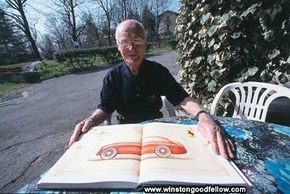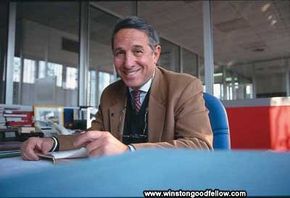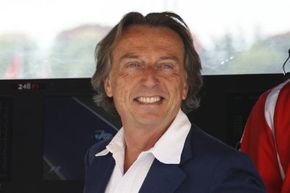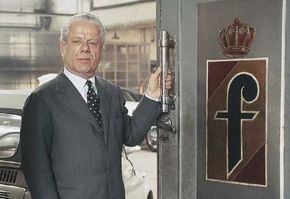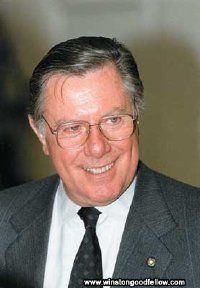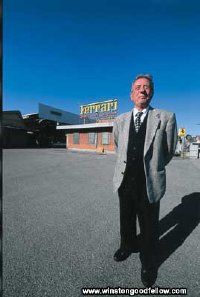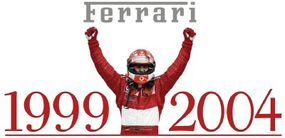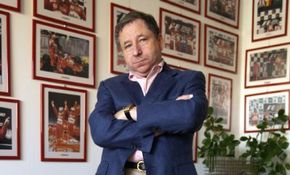Role in Ferrari history: Team manager who helped restore Ferrari’s F1 glory in the 1990s; later added production-car and CEO responsibilities.
Jean Todt came to Maranello in 1994 at the behest of company president Luca di Montezemolo, charged with reviving Ferrari’s then-flagging Formula 1 program. Though it was his first involvement with Grand Prix, Todt was eminently qualified, having made his mark as a first-class driver, navigator and team manager in international rallying and sports-car competition.
Born in 1946 to middle-class French parents, Todt was passionate about motor racing as a boy. He especially dreamed of becoming “the most talented F1 driver ever,” as he told Ferrari Rosso magazine. “My father was a doctor, but I had no money, and I thought the best way to get in without having anything to invest was to be a rally co-driver.” He got just that chance in 1966, as a last-minute substitute. But young Jean soon decided he would be even better as a navigator. He was, and went on to land a series of rides with several top teams, thanks to a growing reputation for cool-headed dedication, meticulous organization, and consummate people skills.
Those traits would serve him well starting in late 1981, when Todt realized another ambition in being named to head a newly formed motorsports division at Peugeot Talbot. Over the next few years he spearheaded development of Peugeot’s Group B rally car, the turbocharged all-wheel-drive 205 T16 that won both driver’s and manufacturer’s championships in 1985 and ’86. When the FIA sanctioning body abruptly ended Group B, due to a number of fatal accidents, Todt turned Peugeot to off-road endurance racing, leading to four outright wins in the gruelling Paris-Dakar rally. He then set himself a new challenge: a high-speed prototype-class racer for LeMans and the FIA World Sportscar Championship. Though the Peugeot 905 was uncompetitive on its late-1990 debut, Todt assembled the people and resources to make the car a winner in 1992. Its last and best moment came in 1993 with a 1-2-3 sweep at LeMans.
Todt proposed that Peugeot enter Grand Prix racing, but when the company said non, he decided it was time for a change. “I thought I had done everything in motor racing...apart from F1, which was not for me absolutely necessary,” he recalled in Ferrari Rosso. “I wanted to be more involved as a manager in a different activity within the company.” Trouble was, Peugeot had nothing like that available, and it was about to abandon racing.
Then Ferrari called with an offer Todt couldn’t refuse. It was the same sort of job, and it meant leaving his family behind in France, but it was the chance of a lifetime. “It’s not like [with] Peugeot or Toyota,” he said. “It’s like you are competing in the finals of the soccer World Cup. That’s the way Ferrari is . . . [The decision] was difficult, but the best choice I could have made.”
It might not have seemed so when he arrived. Ferrari’s F1 team had been winless for three seasons, beset by corporate politics and internal distractions resulting from unhelpful management shuffles ordered by parent Fiat. But now Di Montezemolo was in charge, and he told Todt to do what was necessary. Todt did, raiding Team Benetton to secure two-time world champion driver Michael Schumacher. Engineer Rory Byrne and technical director Ross Brawn followed him to Italy during 1997. With patient determination, Todt welded these and other talents into a focused, well-oiled team that would prove unstoppable starting in 1999, ultimately amassing six straight makes titles and five world driver crowns.
In person, Jean Todt has the stern correctness of a military man. He seldom smiles, and has no time to suffer fools, especially if they’re journalists. But those who know him say he can also be warm, playful and generous, traits that doubtless account for the strong loyalty he engenders in those he works with. He forged a particularly strong bond with Schumacher, a near “father-and-son” relationship that insiders view as a major factor in Ferrari’s utter dominance of F1 in 1999-2004.
Todt took on new challenges in 2004 when he added the title of Managing Director for Ferrari’s production-car business, thus finally winning the executive post he had sought so long. Two years later, at age 60, he was elevated to CEO. Though busier than ever, Todt still gets things done with a rare drive and precision, whether it’s running the Scuderia, negotiating sponsorship deals, or overseeing a sales organization spanning four continents. Too much for one person? Apparently not for the ever-determined Jean Todt. And whatever else he may achieve, he has already earned a secure and honored place in Ferrari history.
For more fantastic Ferrari information, check out:
- How Ferrari Works
- Ferrari Cars
- Other Cars With Ferrari Engines
- Ferrari History and Biographies
- Ferrari Pictures
- Ferrari F1
- Ferrari Sports Racing Cars
- Ferrari 599 GTB Fiorano
